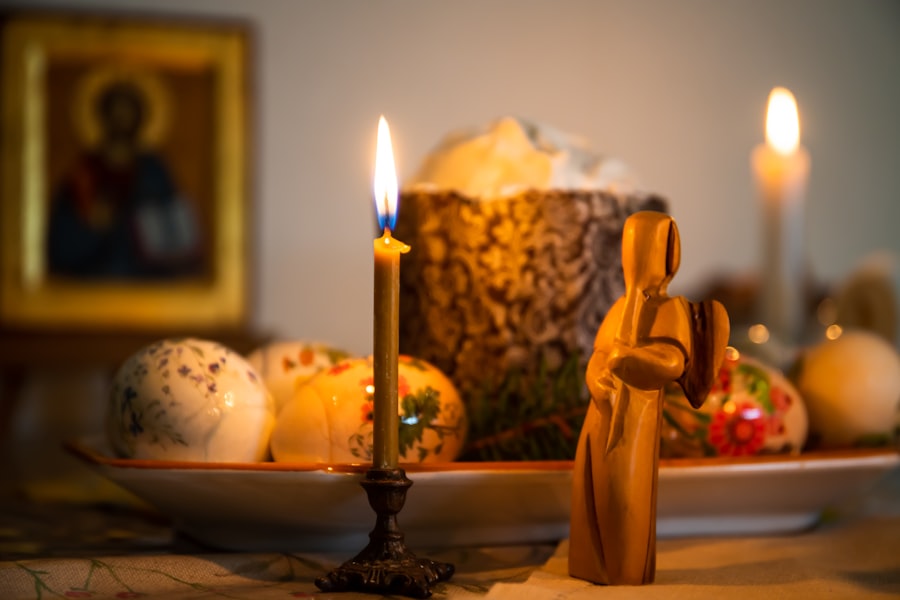Maintaining appropriate nighttime temperatures for chickens is essential for their health and productivity. Chickens are susceptible to temperature fluctuations, particularly during colder seasons, and depend on their plumage and body heat for warmth. Exposure to cold can result in stress, reduced egg production, compromised immune function, and in severe cases, mortality.
Therefore, providing a warm and comfortable environment is crucial for the overall well-being of chickens. Chickens are most vulnerable to cold temperatures during their roosting period at night. Insufficient warmth can lead to discomfort and stress, negatively impacting their ability to rest and recuperate for the following day.
Moreover, cold conditions force chickens to expend additional energy to maintain body heat, which can result in decreased egg production and overall health issues. By ensuring a warm and cozy nighttime environment, chicken owners can help their flock conserve energy and maintain optimal health. Understanding the importance of keeping chickens warm at night is crucial for poultry keepers who aim to maintain the health, happiness, and productivity of their flock.
Implementing appropriate measures to provide warmth during colder periods can significantly contribute to the overall success of chicken-keeping endeavors.
Table of Contents
- 1 Providing proper shelter and bedding for your chickens
- 2 Using heat lamps or heating pads to maintain warmth
- 3 Insulating the chicken coop to retain heat
- 4 Utilizing natural methods to keep chickens warm
- 5 Monitoring and adjusting temperature as needed
- 6 Ensuring adequate ventilation while keeping chickens warm
- 7 FAQs
- 7.1 What are the best ways to keep chickens warm at night?
- 7.2 What temperature is too cold for chickens at night?
- 7.3 Should I use a heat lamp to keep my chickens warm at night?
- 7.4 How can I insulate my chicken coop to keep it warm at night?
- 7.5 What are the signs that my chickens are too cold at night?
Key Takeaways
- Keeping chickens warm at night is crucial for their health and well-being
- Proper shelter and bedding are essential for providing a comfortable environment for chickens
- Heat lamps or heating pads can be used to maintain warmth in the chicken coop
- Insulating the coop helps retain heat and keep chickens warm during cold nights
- Natural methods such as providing extra bedding and using the chickens’ body heat can also help keep them warm
- Regularly monitor and adjust the temperature in the coop to ensure it stays at a comfortable level for the chickens
- Adequate ventilation is important for maintaining air quality while keeping chickens warm
Providing proper shelter and bedding for your chickens
Designing a Well-Constructed Chicken Coop
A well-constructed chicken coop with adequate insulation is crucial for keeping chickens warm at night. The coop should be designed to provide enough space for the flock to roost comfortably while allowing for good air circulation. This will help retain heat and protect chickens from cold drafts.
The Role of Bedding in Insulation and Comfort
Using suitable bedding such as straw or wood shavings can help insulate the coop and provide a comfortable resting area for the chickens. By ensuring that the coop is well-built and equipped with suitable bedding, you can create a warm and inviting space for your flock to spend the night.
Maintenance is Key to a Healthy and Warm Environment
In addition to providing proper shelter and bedding, it is essential to keep the coop clean and dry to prevent moisture buildup, which can make the environment colder and more uncomfortable for the chickens. Regularly cleaning out soiled bedding and ensuring proper ventilation can help maintain a warm and healthy living space for your flock. Providing nesting boxes with fresh bedding can give hens a warm and secure place to lay their eggs, contributing to their overall comfort and well-being.
Using heat lamps or heating pads to maintain warmth

In colder climates, using heat lamps or heating pads can be an effective way to maintain warmth in the chicken coop during the night. Heat lamps can be hung in the coop to provide a source of warmth for the chickens, especially during extreme cold weather. It is essential to position the heat lamps at a safe distance from any flammable materials and to secure them properly to prevent any accidents.
Additionally, using heating pads designed specifically for poultry can offer a safe and efficient way to keep chickens warm at night. These heating pads are designed to provide consistent warmth without posing a fire hazard, making them a reliable option for maintaining a comfortable temperature in the coop. When using heat lamps or heating pads, it is crucial to monitor the temperature in the coop regularly to ensure that it remains within a safe range for the chickens.
It is also important to provide a balance of warmth without overheating the coop, as excessive heat can be harmful to the birds. By using heat lamps or heating pads responsibly, you can help create a warm and comfortable environment for your chickens to rest during the night. These heating options can be particularly beneficial for young chicks or older birds that may be more susceptible to cold temperatures.
Insulating the chicken coop to retain heat
Insulating the chicken coop is an effective way to retain heat and keep chickens warm at night. Proper insulation can help regulate the temperature inside the coop, preventing cold drafts and maintaining a comfortable environment for the flock. Insulation materials such as foam board or fiberglass can be used to line the walls and ceiling of the coop, helping to trap heat inside and keep out cold air.
Additionally, sealing any gaps or cracks in the coop can further prevent heat loss and create a more energy-efficient living space for the chickens. In addition to insulating the walls and ceiling, it is important to insulate the floor of the coop to prevent cold from seeping up from the ground. Adding a layer of insulation under the bedding can help create a barrier between the chickens and the cold ground, providing extra warmth and comfort during the night.
By insulating the chicken coop effectively, you can create a cozy and inviting space for your flock to roost while also reducing energy costs associated with heating the coop.
Utilizing natural methods to keep chickens warm
In addition to artificial heating methods, there are natural ways to keep chickens warm at night. One natural method is to provide extra food before bedtime, as digestion produces heat within the chicken’s body. Feeding your flock a high-energy snack such as cracked corn or sunflower seeds before they roost for the night can help generate internal warmth and keep them comfortable during colder temperatures.
Additionally, ensuring that your chickens have access to fresh water at all times is essential, as staying hydrated can help regulate their body temperature and keep them warm. Another natural method for keeping chickens warm at night is to provide them with ample bedding material such as straw or wood shavings. The bedding acts as insulation, trapping heat and providing a comfortable resting area for the chickens.
By using natural materials in the coop, you can create a warm and inviting environment for your flock without relying solely on artificial heating methods. Utilizing natural methods in conjunction with other heating options can help maintain a comfortable temperature in the chicken coop while also promoting the well-being of your flock.
Monitoring and adjusting temperature as needed

Creating an Optimal Environment
Regularly checking the thermometer and making any necessary adjustments can help create an optimal environment for your flock to rest during the night. In addition to monitoring the temperature, it is vital to observe your chickens’ behavior for signs of discomfort or stress due to temperature fluctuations.
Recognizing Signs of Discomfort
If you notice that your chickens are huddling together or showing signs of distress, it may indicate that they are too cold and need additional warmth. Conversely, if they are panting or seeking cooler areas in the coop, it may be a sign that they are too hot.
Ensuring Comfort and Health
By paying attention to your flock’s behavior and making adjustments as needed, you can ensure that they remain comfortable and healthy throughout the night.
Ensuring adequate ventilation while keeping chickens warm
While it is important to keep chickens warm at night, it is equally crucial to ensure adequate ventilation in the chicken coop. Proper ventilation helps remove excess moisture and ammonia from the air, creating a healthier living environment for the chickens. It also helps regulate temperature by preventing heat buildup in the coop during warmer weather.
By providing adequate ventilation, you can maintain air quality while also keeping your flock warm and comfortable at night. When designing or modifying a chicken coop for winter warmth, it is essential to incorporate ventilation openings that can be adjusted as needed. This allows you to control airflow based on weather conditions and temperature fluctuations.
Additionally, using hardware cloth or wire mesh over ventilation openings can prevent predators from entering while still allowing air circulation. By ensuring adequate ventilation in the chicken coop, you can create a well-balanced environment that promotes warmth and comfort for your flock while also supporting their overall health. In conclusion, keeping chickens warm at night is essential for their health and well-being, especially during colder months.
Providing proper shelter and bedding, using heating options responsibly, insulating the coop effectively, utilizing natural methods, monitoring temperature, and ensuring adequate ventilation are all crucial aspects of creating a warm and comfortable environment for your flock. By understanding these key factors and taking proactive measures, you can help your chickens stay warm and healthy throughout the night, ultimately contributing to their overall happiness and productivity.
If you’re looking for ways to keep your chickens warm at night, you might want to check out this article on chicken coop design tips from Poultry Wizard. It offers helpful advice on how to create a cozy and insulated space for your chickens to roost in during the colder months.
FAQs
What are the best ways to keep chickens warm at night?
There are several ways to keep chickens warm at night, including providing a well-insulated coop, using heat lamps or heated pads, and ensuring adequate ventilation without drafts.
What temperature is too cold for chickens at night?
Chickens can generally tolerate temperatures as low as 0°F (-18°C) as long as they have a well-insulated coop and access to food and water. However, temperatures below freezing can still be dangerous, especially if the chickens are wet or exposed to drafts.
Should I use a heat lamp to keep my chickens warm at night?
Heat lamps can be used to keep chickens warm at night, but they should be used with caution to avoid fire hazards. It’s important to use a properly secured heat lamp and to monitor the temperature in the coop to prevent overheating.
How can I insulate my chicken coop to keep it warm at night?
Insulating a chicken coop can be done by adding extra bedding, sealing any drafts, and using insulation materials such as foam board or reflective insulation. It’s important to ensure that the coop remains well-ventilated despite the insulation.
What are the signs that my chickens are too cold at night?
Signs that chickens are too cold at night include huddling together for warmth, decreased egg production, lethargy, and frostbite on their combs and wattles. It’s important to monitor the behavior and health of the chickens during cold weather.
Meet Walter, the feathered-friend fanatic of Florida! Nestled in the sunshine state, Walter struts through life with his feathered companions, clucking his way to happiness. With a coop that’s fancier than a five-star hotel, he’s the Don Juan of the chicken world. When he’s not teaching his hens to do the cha-cha, you’ll find him in a heated debate with his prized rooster, Sir Clucks-a-Lot. Walter’s poultry passion is no yolk; he’s the sunny-side-up guy you never knew you needed in your flock of friends!







